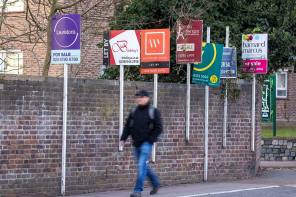

Nearly one in five landlords (19 per cent) with 20 or more rental properties have made sell-offs in order to reduce portfolio sizes or diversify, according to research by Foundation Home Loans.
In total, more than a third (38 per cent) of UK landlords said they had reviewed the size of their portfolios to ensure they could withstand any creeping costs, while 7 per cent have sold of properties.
As well as political uncertainty, landlords have faced a 3 per cent hike in stamp duty and the phasing out of tax relief for higher-rate taxpayers.
The Prudential Regulation Authority (PRA) has also mandated more rigorous underwriting standards for portfolio landlords (those with four or more properties), which are due to be introduced by all lenders by 30 September.
Foundation’s research also showed 30 per cent of landlords have hiked rental prices, with the greatest proportion doing so in the East Midlands (41 per cent) - a popular location for professionals seeking more space alongside close proximity to London.
Meanwhile, almost a quarter (24 per cent) of landlords operating in Central and Outer London have raised their rent prices, putting more pressure on affordability for tenants.
Almost three quarters (71 per cent) of landlords said they had experienced a drop in confidence, including 78 per cent of those operating in inner London and 77 per cent in outer London, reflecting the cooling London market and decreasing tenant demand.
The research is based on a survey of 780 landlords by BDRC Continental in June 2017.
It follows recent research from ARLA Propertymark revealing almost a third (31 per cent) of letting agents saw landlords raise their rents in July amid ongoing pressure on the buy-to-let (BTL) sector
Jeff Knight, marketing director, Foundation Home Loans, said landlords had been forced to “batten down the hatches” in response to uncertainty and tax changes.
He continued: “The fact remains that, whether it’s as a stepping stone to home ownership or a longer term lifestyle decision for tenants, the rental sector is an increasingly important part of the housing mix.
“This will ultimately be best served by a wide choice of property, and good landlords who can have confidence in decent returns.”
Oliver Marley, mortgage adviser and head of research at London-based Independent James, welcomed news of the sell-offs as evidence that the government’s plans were working.
“This was the main objective – they wanted these bigger landlords to sell up to slow things down a bit,” he explained.
“Some people look at it as a bad thing, but in my opinion the increased rates of tax and the PRA bringing in new rules on buy-to-let mortgages is doing what it was supposed to do in freeing up more properties for people looking to buy.
“What the PRA were doing is trying to weed out some of the less professional landlords – some that take cash in hand and so on. It is only the rogue landlords that would be a little bit more wary of the changes. The aim was to stamp out some of the more unorthodox and ropey ones.”
Percentage of UK landlords who reviewed portfolio size, by region
| UK | 38% |
| East of England | 40% |
| East Midlands | 50% |
| London (Central) | 45% |
| London (Outer) | 40% |
| North East | 43% |
| North West | 34% |
| Scotland | 35% |
| South East | 40% |
| South West | 38% |
| Wales | 32% |
| West Midlands | 35% |
| Yorkshire | 28% |
simon.allin@ft.com



